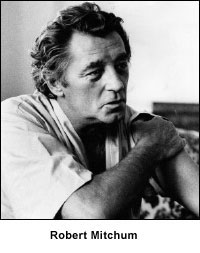
It’s a universal ailment, a constant source of personal dissatisfaction; yet another incremental dollop coagulating in that big ol’ fifty-gallon drum of all pervading ennui. Ain’t no way around it---one’s ambitions always seem to exceed one’s actual capabilities. Intentions, however sincere, somehow become thwarted, and then it’s throw-away-the-list time, or let-me-downgrade-my-goals time, or even. let’s-have-a-few-drinks-and-obliterate-it time.
I’m right there with the stumbling herd, jotting to-do lists down with pent up ferocity, modifying mental notes all the livelong day, awakening daily with a new found and etched-in-sincerity pathway. Then, of course, I really wake up.
Ironically enough, one of the more pleasant aspects of the whole holiday season –the reception of presents—has made me somewhat blue, bringing into sharp focus yet another of misspent endeavors. Try as I might, with the noblest of intentions, to read more books, and get my nose outta the dozens of publications I subscribe to, or the three daily newspapers I peruse in hard copy, never mind the predictable daily attention-grabbers like the Internet, the television, the radio, the CD player, at the end of the proverbial day the unread books seem to gather around me, much like the silent and predatory winged creatures in Hitchcock’s The Birds, piled above my shoulder on the end table near the couch, loosely placed on the outer edges of the built-in book shelves, artistically splayed throughout various nooks and crannies of the house and office.
I finally get through one, energized again by the extended and engaged experience of reading, yet there is always three or so (ever-changing it seems), in the on deck circle, and a heap more crowding the edge of the dugout bench, all vying for a brief spot in the to-be-read line-up. (I think I’ll call my team the Sisyphean Nine.) Having just finished Frankly My Dear: Gone With the Wind Revisited by Molly Haskell (Yale University Press, 2009), I easily transitioned into Victor Fleming: An American Movie Master by Michael Sragow (Pantheon, 2008), and then, came the thrill (and burden) of the Christmas deluge. My challenge for the months ahead (couldn't make this up):
A New New Deal: How Regional Activism Will Reshape the American Labor Movement by Amy B. Dean, David B. Reynolds, and Harold Meyerson (Cornell University Press, 2009)
The Collected Stories of Lydia Davis, by Lydia Davis (Farrar, Straus & Giroux, 2009)
Inherent Vice by Thomas Pynchon (Penguin, 2009)
Dancing in the Dark: A Cultural History of the Great Depression, by Morris Dickstein (Norton, 2009)
Cooperstown Confidential: Heroes, Rogues and the Inside Story of the Baseball Hall of Fame, by Zev Chafets (Bloomsbury, 2009)
Satchel: The Life and Times of an American Legend, by Larry Tye (Random House, 2009)
The Greatest Game: The Yankees, the Red Sox and the Playoff of ‘78, by Richard Bradley (Free Press 2008)
Baseball Americana, by Harry Katz, Frank Ceresi, and Phil Michel (Smithsonian, 2009)
Frank Sinatra: The Family Album, by Charles Pignore (Little Brown, 2007)
Big Man: Real Life and Tall Tales, by Clarence Clemons and Don Reo (Gran Central Publishing, 2008)
High on Rebellion: Inside the Underground at Max’s Kansas City, by Yvonne Sewell Ruskin (Thunder Mouth Press, 1998)
The Authorized and Illustrated Story of The Stooges, by Robert Matheu (Abrams, 2009)
The Velvet Underground: New York Art, Edited by Johan Kugleberg (Rizzoli, 2009)
Warren Oates: A Wild Life, by Susan Compo (University Press of Kentucky, 2009)
Tell Me How You Love the Picture: A Hollywood Life, by Edward Feldman with Tom Barton (St. Martins, 2005)
Robert Altman: The Oral Biography, by Mitchell Zuckoff (Knopf, 2009)
Whew, wow, damn, I just, well, … don’t know. Maybe I can conveniently break my leg, that oughta truly free up some time. My kind of resolution.













 (As monomaniacal as I might truly be, maintaining a blog of this high degree of purity and insight (heh-heh) gets wearying. I realize I have enough know-it-all-pallies, informormed buds, and sharp hipster connections, that I oughtta let one or two of you bring it on home occasionally. Here’s the basic premise: 1-3 concise paragraphs about a CD (or as we old schoolers still refer to it-an album) that wasn’t necessarily an all-timer, a Blonde on Blonde or a London Calling. Instead, spotlight a possible peripheral release that stands the test of time and delivers on its small promises, or simply executes succinctly and manages to remain on yer personal playlist--- a sideways record, an overlooked effort, a self-contained minor gem, ya know, a record that’s got Shelf Life. Send me your brilliant overview in simple Word form, and I’ll post ‘em up, giving my avid and obsessive readers (heh-heh-heh) an occasional breather from the sound of one man pontificating. Weighing in this time is The Professor, Wayne Cresser)
(As monomaniacal as I might truly be, maintaining a blog of this high degree of purity and insight (heh-heh) gets wearying. I realize I have enough know-it-all-pallies, informormed buds, and sharp hipster connections, that I oughtta let one or two of you bring it on home occasionally. Here’s the basic premise: 1-3 concise paragraphs about a CD (or as we old schoolers still refer to it-an album) that wasn’t necessarily an all-timer, a Blonde on Blonde or a London Calling. Instead, spotlight a possible peripheral release that stands the test of time and delivers on its small promises, or simply executes succinctly and manages to remain on yer personal playlist--- a sideways record, an overlooked effort, a self-contained minor gem, ya know, a record that’s got Shelf Life. Send me your brilliant overview in simple Word form, and I’ll post ‘em up, giving my avid and obsessive readers (heh-heh-heh) an occasional breather from the sound of one man pontificating. Weighing in this time is The Professor, Wayne Cresser)








